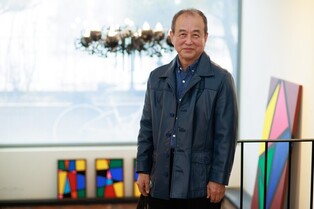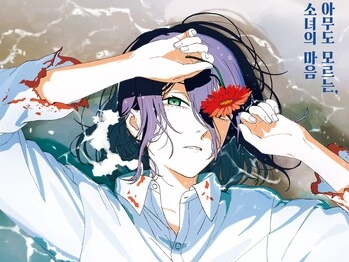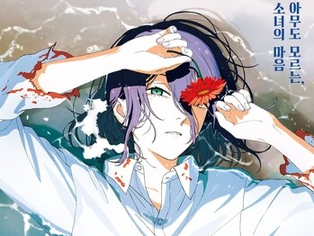*Editor’s note: K-Odyssey introduces travel journals by alumni of Yonhap News Agency Travel Academy, provided in Korean and English. The original Korean article precedes the English translation.
*편집자 주: K-Odyssey는 연합뉴스 <여행자학교> 수료생들의 여행기를 한국어와 영어로 소개합니다. 한국어 원문을 먼저 게재한 뒤 외국 독자들을 위해 영어 번역본도 함께 싣습니다.
전남 강진 고성사의 저녁 종소리, '고암모종(古庵暮鐘)'
신재천(연합뉴스 여행자학교 1기)
전남 강진 고성사는 우두봉 아래, 보은산 어깨쯤에 겨드랑이처럼 숨어들어 있는 절이다. 보은산의 산세는 소가 누워 있는 모습인데, 꼭대기는 소머리에 해당하는 우두봉(牛頭峰)이고, 고성사가 있는 곳은 소 목 아래 방울(워낭)을 다는 부분에 해당하므로 절 이름을 고성(高聲)이라 했다.
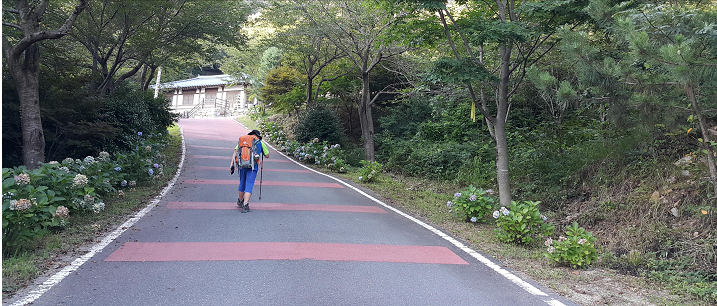 |
| ▲고성사에 오르는 막바지 길이 아스팔트 경사길이다. 점심을 거른 허기진 배로 몇 시간을 걸어 기진맥진 고성사에 도착했다. This photo shows, steep hill leading up to the Goseong Temple. |
강진 군청 뒤로 난 등산길을 몇 번 오르락내리락하니 포장한 아스팔트 도로 끝에 고성사가 보였다. 너른 마당에 산을 등진 세 칸짜리 대웅전이 있고 그 앞에 종루가 있다. 마당 끝에 서서 남쪽을 보면 저 멀리 강진만과 주작산, 덕룡산 봉우리가 희끗희끗하다. 산 아래쪽으로 넓은 평야가 펼쳐지고 한쪽으로는 강진만이 삐죽이 보인다.
배낭을 풀고 수국이 한껏 핀 바위 옆에 앉았다. 법당에서 육성으로 흘러나오는 스님 독경이 가슴에 밀려온다. 스님의 불경 외는 소리가 베토벤의 교향곡 5번 ‘운명’의 1악장부터 3악장까지 번갈아 연주하는 듯하다. 해가 서쪽 하늘에 손톱 쪼가리만큼 남았을 때 독경이 끝났다.
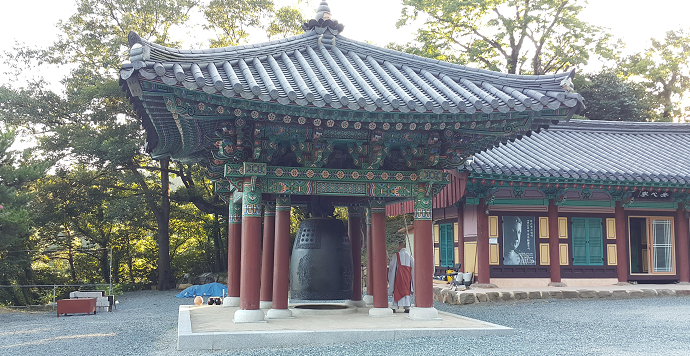 |
| ▲고성사 대웅전 마당에 있는 종각이다. 장삼을 깨끗하게 입은 스님이 독경을 끝내고 종을 치고 있다. 서쪽으로는 해가 넘어갈 작정을 하고 벌겋게 물들기 시작한 순간이다. This photo shows, the bell tower located within the Goseong Temple. |
독경을 끝낸 스님 범종을 친다. 붉은빛으로 물든 서쪽 하늘에 은은한 종소리가 퍼진다. 댕에에엥, 대에에에엥, 운명 교향곡의 4악장처럼 환희가 강진만 물결까지 흔든다.
금릉팔경(金陵八景) 중 으뜸이 고암모종(古庵暮鐘)이라고 했던가? 강진 옛 이름이 금릉인데, 강진에서 가장 으뜸으로 치는 경치가 고성사에서 저녁 무렵 범종 치는 풍경이라 하지 않았던가.
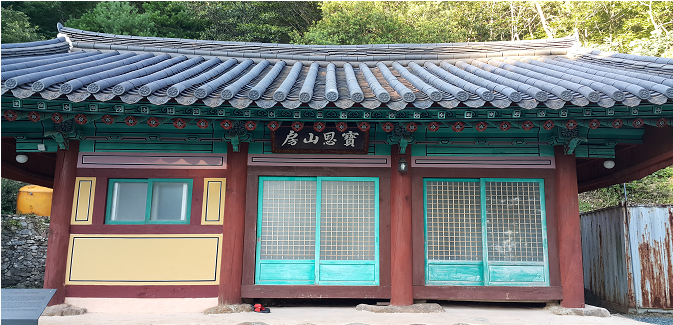 |
| ▲세 칸짜리 절방에서 다산과 아들은 1년을 꼬박 주역과 예기에 파묻혔다. This photo shows, three roomed structure where Dasan Jeong Yak-yong stayed with his son for a year. |
종루를 마주 보는 마당을 사이에 두고 세 칸짜리 단아한 건물이 있는데 그 암자에 보은산방(寶恩山房)이라는 현판이 걸려있다. 다산 정약용이 사의재(四宜齋)를 떠나 일 년간 머문 곳이다. 다산은 3,000여 편이나 되는 시를 남겼는데, 그중 보은산방을 시제로 다음과 같은 마음을 노래했다.
제목, 보은산방[題, 寶恩山旁]
정약용
우두봉 아래 있는 작은 선방
대나무가 조용하게 짧은 담을 둘러있네
작은 바다 풍조는 낭떠러지와 연해 있고
고을 성의 연화는 산이 첩첩 막았더라
둥그레한 나물통은 중 밥자리 따라다니고
볼품없는 책 상자는 나그네 행장이라네
청산이면 어디인들 못 있을 곳이 있나
한림의 춘몽이야 이미 먼 옛 꿈이라네.
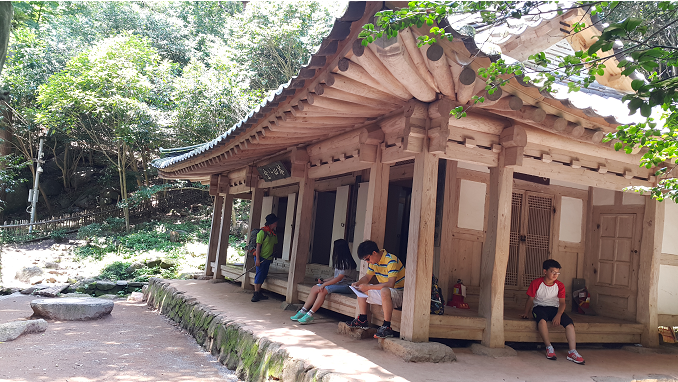 |
| ▲만덕산에 있는 다산초당은 3칸짜리 기와집이다. 한 가운데 공부방이 있고, 양쪽으로 제자들이 드나들던 방이 있다. 오른쪽에는 툇마루가 있는데, 다산은 그 앞에 조그만 연못을 팠다. 마당에 보이는 넓적한 돌은 차를 끓여 마시던 다조(茶竈, 茶俎)다. This photo shows, Dasan Chodang. |
유배 생활 4년이 지나 다산은 자식 교육을 위해 큰아들 학연을 강진으로 불렀다. 생계마저 곤란했던 학연은 다음 해까지 농사지은 마늘을 팔아 노잣돈을 마련했다. 그러나 저잣거리에 있는 주막집 사의재는 아들을 교육하기 위해서 좋은 장소가 아니었다. 백련사의 해장 선사가 주선한 고성사에서 아들과 함께 1805년 겨울부터 일 년을 보냈다. 이곳에서 아들에게 주역(周易)과 얘기(禮記)를 가르쳤다.
다산은 학연, 학유 두 아들을 올바르게 훈육하기 위해 편지를 이용했다. 과거시험은 보지도 못하고 관리로 등용될 수 없는 폐족이지만 독서를 게을리하지 않도록 질책과 호소를 편지로 반복했다. 아들 학연이 한때 학문을 중단하고 권문세가들에게 선을 놓아 아버지를 구명하려고 했다. 이 소식을 들은 다산은 편지로 호되게 꾸짖고 학문에 게을리하지 말라고 호소했다.
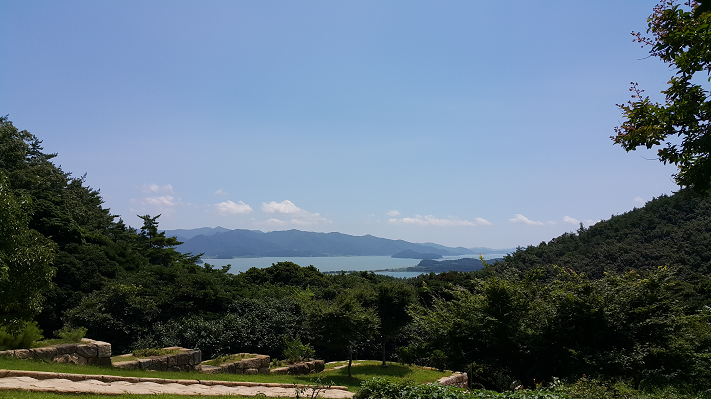 |
| ▲다산초당 천일각에서 내려보면 멀리 강진만이 보인다. 해창마을에 어선이라도 들어오는 날이면 다산은 흑산도나 한양의 소식을 애타게 기다렸다. This photo shows, the scenery from Cheonilgak located within Dasan Chodang. |
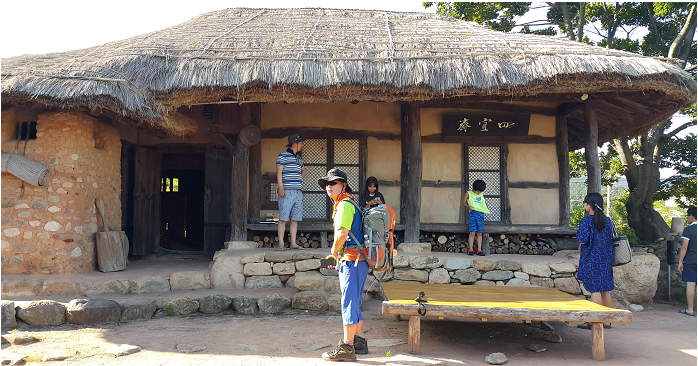 |
| ▲칼날 같은 강진에서 사학에 빠진 무도한 죄인 다산을 위해 방 한 칸을 내 준 성문 밖 주막네의 다사로움이 있는 사의재다. 사의재 뒤편에 주모와 딸 동상이 있다. This photo shows, tavern where Jeong Yak-yong stayed. |
고암모종 소리를 들으며, 강진을 굽어보았을 다산을 생각해 보니 가슴이 저렸다. 다시 한양으로 불려 갈 수 있을까, 빈한해진 처자식 살림은 어찌 되었을까, 풍비박산된 가문에서 조상 묘와 신주는 누가 관리하고 있을까? 불안과 초조, 두려움과 절망 속에서 벌써 4년을 주막집에서 보냈다. 아들을 불러내려 주역을 가르쳤다는 것은 아들만이라도 세상 돌아가는 물정을 빨리 파악하기를 바라지 않았을까.
이곳 고성사에서 다산은 한 치 앞을 볼 수 없는 불면의 날에 아들만이라도 똑바로 가르쳐야겠다는 열정으로 보냈을 것이다. 눈이 허리까지 차는 매서운 겨울 날씨에 주역을 읽으며 씨름했을 두 부자를 생각해 본다. 아들의 학문이 익어가는 것을 흡족해하면서도, 저 멀리 강진 바다와 주작산을 바라보며 스스로 가슴을 억누르고 있던 다산을 헤아릴 수 있을까?
남도 답사를 한다면 그 첫 번째로 강진을 꼽고 싶다. 강진은 다산 정약용이 1801년부터 18년간이나 유배된 곳이다. 그 엄혹한 땅에서 한자문화권 역사상 가장 방대한 저술이 탄생했다. 실학이 ‘1표2서’로 대표되는 학문적 모습으로 태어나고, 18명의 제자를 양성해 다산학파라는 독특한 유학의 열매를 맺은 곳이다.
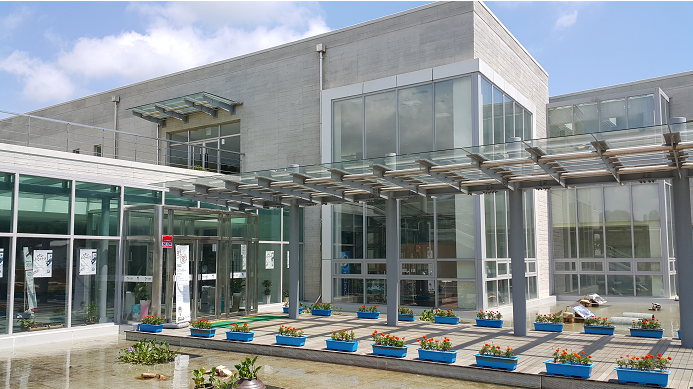 |
| ▲다산기념관은 다산수련원과 같은 장소에 있다가 2014년에 새로 지어서 다산초당 아래로 이전하였다. 200년 전에 생겨난 다산 정신과 산물이 현대식 건물에 디지털 콘텐츠로 변해 있다. This photo shows, Dasan museum located in Gangjin. |
그 덕분에 강진은 다산박물관, 다산초당, 사의재, 백련사, 강진다원 등 다산의 귀양살이와 관련된 문화유적과 관광지로 유명하다.
삶이 힘들고 어렵다고 느낄 때 강진으로 가라. 그곳에서 18년의 처참한 삶에서 조선 후기 대학자로 다시 태어난 다산의 역전을 느껴보라.
Goammojong(古庵暮鐘) of Goseong Temple in Gangjin
By Jaecheon (Jason) Shin (Alumnus of Travel Academy season 1)
Goseong Temple in Gangjin is hidden under the Udubong Peak at the shoulder of Boeun Mountain. The mountain Boeun is shaped like a cow lying down, headed by Udubong Peak. The Goseong Temple is located at the part where a cow bell, Wonang, is attached, under the cow's neck -- that is how the name of the temple came to be.
As I hiked up and down the trail behind Gangjin County Office, I saw Goseong Temple at the end of the paved road. In the grand yard, three-roomed Daeungjeon stands against the mountain with a bell tower in the front. Gazing the south from the yard's end, I was able to see the blurry sight of Gangjinman Bay, Jujak Mountain, and Deokryong Mountain. Under the mountain, vast field ran on one side and Gangjinman Bay on the other.
I unpacked my backpack and sat next to a rock, surrounded by the hydrangeas. The monk's chant from the temple resonated directly from Daeungjeon to my heart. The chant echoed in my heart, like the three movements of the Beethoven’s “Symphony No. 5." The chant ended by the time when the sun left scarlet gleams in the west.
After the chant, a monk struck the large Buddhist bell, called beomjong. The bell echoed softly through the temple as the sunset spread across the sky. The bell rang like the fourth movement of the Beethoven’s Symphony No, 5, and it seemed as if the tides of the Gangjin Bay was dancing to the tune.
If my memory serves me right, Goammojong was dubbed the best of "Geumneungpalgyung," the eight scenic spots of Geumneung. The original name of Gangjin is Geumneung, and they say the best scenery in Gangjin is the view of monks ringing beomjong at dusk in Goseong Temple.
On the other side of the yard, there is an elegant three-room building, with a wooden plank that reads "Boeunsanbang." This is where Dasan Jeong Yak-yong stayed for a year during his exile. Jeong Yak-yong wrote more than 3,000 poems here, including the following poem dedicated to Boeunsanbang.
Boeunsanbang
by Jeong Yak-yong
A small hermitage beneath the peak
Bamboo surrounds it with a quiet short fence
The small sea view includes cliffs and the distant ocean
The blooming flowers of the village are obscured by the mountains
The round vegetable container follows the main meal
The unremarkable book box is the wandering traveler's possession
Though there may be no unexplored places in Cheongsan
The spring dream of Hanrim is already a distant memory.
After a total of four years in banishment, Dasan Jeong Yak-yong called his eldest son Hak-yeon to Gangjin for education. Hak-yeonm who struggled to make a living, managed to raise his travel expenses by selling garlic from his land. However, Dasan found his humble unsuitable for education. He spent a year with his son from the winter of 1805 at Goseong Temple. The accommodation was arranged by Haejangsunsa of Baeknyeon Temple. Jeong Yak-yong taught his son the Book of Changes and the Book of Rites.
Dasan Jeong Yak-yong preferred letters as a means of properly disciplining his two sons Hak-yeon and Hak-yu. Although Jeong Yak-yong came from a fallen family, barred from becoming court officials, he repeatedly lectured and appealed through letters to his sons and did not neglect reading. One day, his eldest son Hak-yeon quit studying and tried to save his father by flattering to a powerful elite family. Upon hearing such news, Dasan Jeong Yak-yong heavily scolded his son in his letter and told him never to neglect his studies.
Listening to the sound of Goammo Bell, I grew pensive at the sight of Gangjin, putting myself in Dasan's shoes. "Will the king ever summon me back to the capital? How would my impoverished wife and children be making a living, and who would be looking after the ancestral graves and tablets?" Dasan Jeong Yak-yong spent four years at a tavern lodging in anxiety, fear, and despair. Maybe he summoned his son to teach the Book of Changes and the Book of Rites, because he wanted his son to quickly understand the worldly affairs.
Dasan Jeong Yak-yong would have spent his days in Goseong Temple with one thing in mind -- to provide his son with proper education. I imagined the two men studying very hard and digging into the Book of Changes in biting winter. Would we be able to understand how Dasan had felt -- probably the fatherly satisfaction for his son's academic progress on one side and his own suppressed yearning on the other as he gazed into the sea of Gangjin and Jujak Mountain?
I would like to recommend Gangjin to anyone who is willing to visit South Jeolla Province. Gangjin is the place where Dasan Jeong Yak-yong was in exile for 18 years since 1801. It is the birthplace of the most extensive literary works in the cultural territories of Chinese characters. It gave rise to the scholarly movement known as "Silhak," a key component of the famous “1pyo 2seo,” and fostered 18 disciples who passed down the unique fruit of Dasan's academic lineage.
Hence, Gangjin is famous for cultural heritages and tourist attractions related to Dasan's exile, such as Dasan Museum, Dasan Chodang, Baengnyeon Temple, and Gangjin Dawon.
When life weighs heavily on you, visit Gangjin. Take a moment to feel the life of Dasan Jeong Yak-yong, a great scholar in the late Joseon Dynasty, who rose from 18 years of agony there.
(This article is translated from Korean to English by Joonha Yoo)
(END)
(C) Yonhap News Agency. All Rights Reserved


















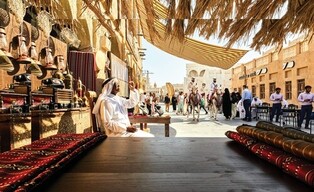




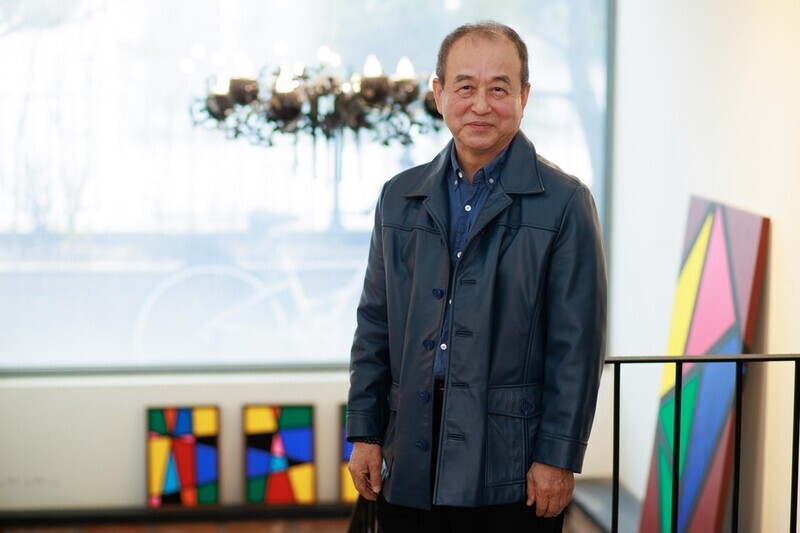

![[가요소식] 보이넥스트도어, 신보로 3연속 밀리언셀러 달성](/news/data/20251025/yna1065624915905018_166_h2.jpg)
